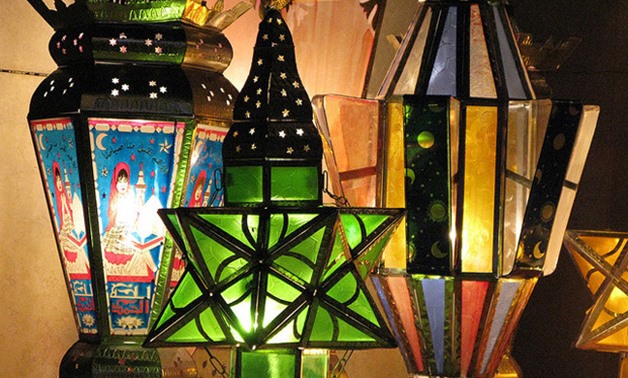
Fanous Ramadan (Lanterns) - FILE
CAIRO - 18 January 2025: As the holy month of Ramadan approaches, workshops across Cairo started the production wheel of lanterns, which are used to decorate strees and homes, and are associated with the month.
Usually known in Arabic as (Fanous Ramadan), translating to Ramadan's lantern, started to appear in the strees, as everyone prepares to decorate their homes.
Egypt Today visited some old workshops in the Gamaleya area, in Cairo, which are more than 100 years old.
Manufacturing lanterns originated in Egypt, where its shapes have gradually diversified to reach the ones known today.
The workshops start early before the holy month, to fulfill orders in addition to production for export, as the Egyptian lantern enjoys great fame in Arab countries, and the entire lantern industry is done manually, consisting of sheet metal and colored glass, in the workshops spread across Cairo.
It is believed that the origin of the lantern was linked to the "Mesaharaty," who walks the streets late night every day during the holy month, calling on sleepers to wake up to eat their Suhoor meal (Meal consumed by Muslims before they start fasting at dawn).
Manufacturing stages
The manufacturing stages begin with cutting the sheet metal, then "perforating" it or shaping it with more than one stanza, then decorating it, then shaping the glass. The process ends with assembling all of that to show the shape of the lantern in different sizes, and the parts of the lantern are formed in fixed sizes, and according to the merchants' orders.
Egypt Today monitored the preparations for the holy month of Ramadan, most notably the manufacture of Ramadan lanterns. The shapes did not differ much from last year, with a slight change in the printing on the lantern.
The sizes vary according to the desire of the shops and customers. The tin lantern has traditional shapes, and they are displayed under different names such as "Abu Lad, Al-Dalalia, Al-Mukhmas, Al-Burj, Al-Maqlub, Al-Shamama, and Abu Shamaa."
"Abu Shamaa" lantern is considered the cheapest type due to its small size.
The wheel of production has turned again inside the Ramadan lantern manufacturing workshops, which are located in several areas in Cairo, such as: Sayeda Zeinab and Al-Gamaleya districts and others. These days are part of a season for Egyptian lantern makers, which are linked to the memories of Egyptians that they recall every year with the advent of the holy month.
The lantern manufacturers explained that the names of the lanterns are different, including the “Burj, Abu Walad, and Farouk” lanterns, and there are other types such as “Lotus, Dalia, Shamama, Chops, Mukhmas, and Shaq Battikha.”
Each lantern has a use, as the large lantern is hung in the streets or placed in the house. There are a number of workshops specialized in manufacturing the small “Abu Shama” lantern, and other workshops produce large lanterns that reach two meters in length, and are produced to order. The shape and size of the lantern determine the price, and the larger its size, the higher its price.





Comments
Leave a Comment